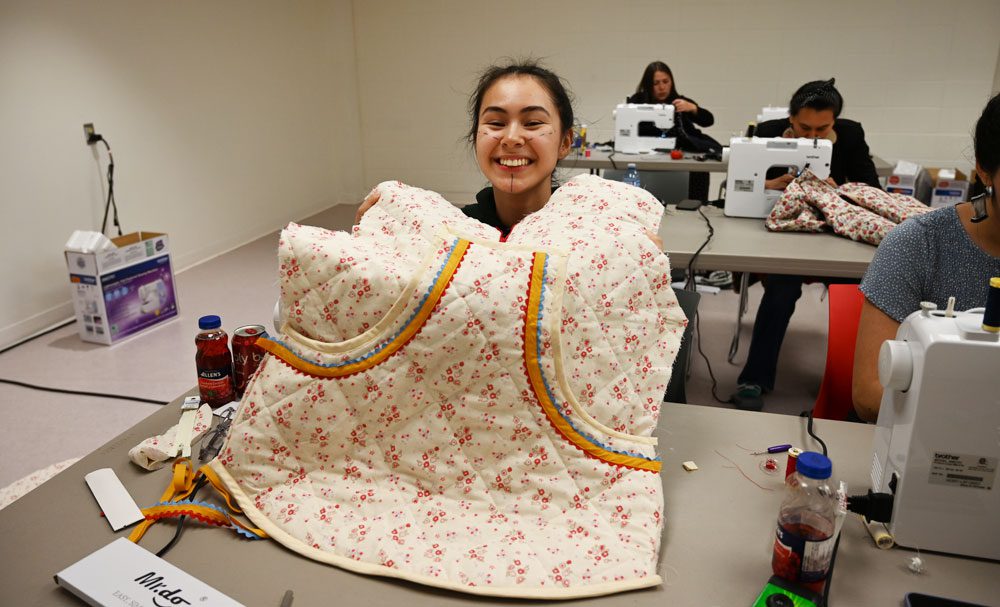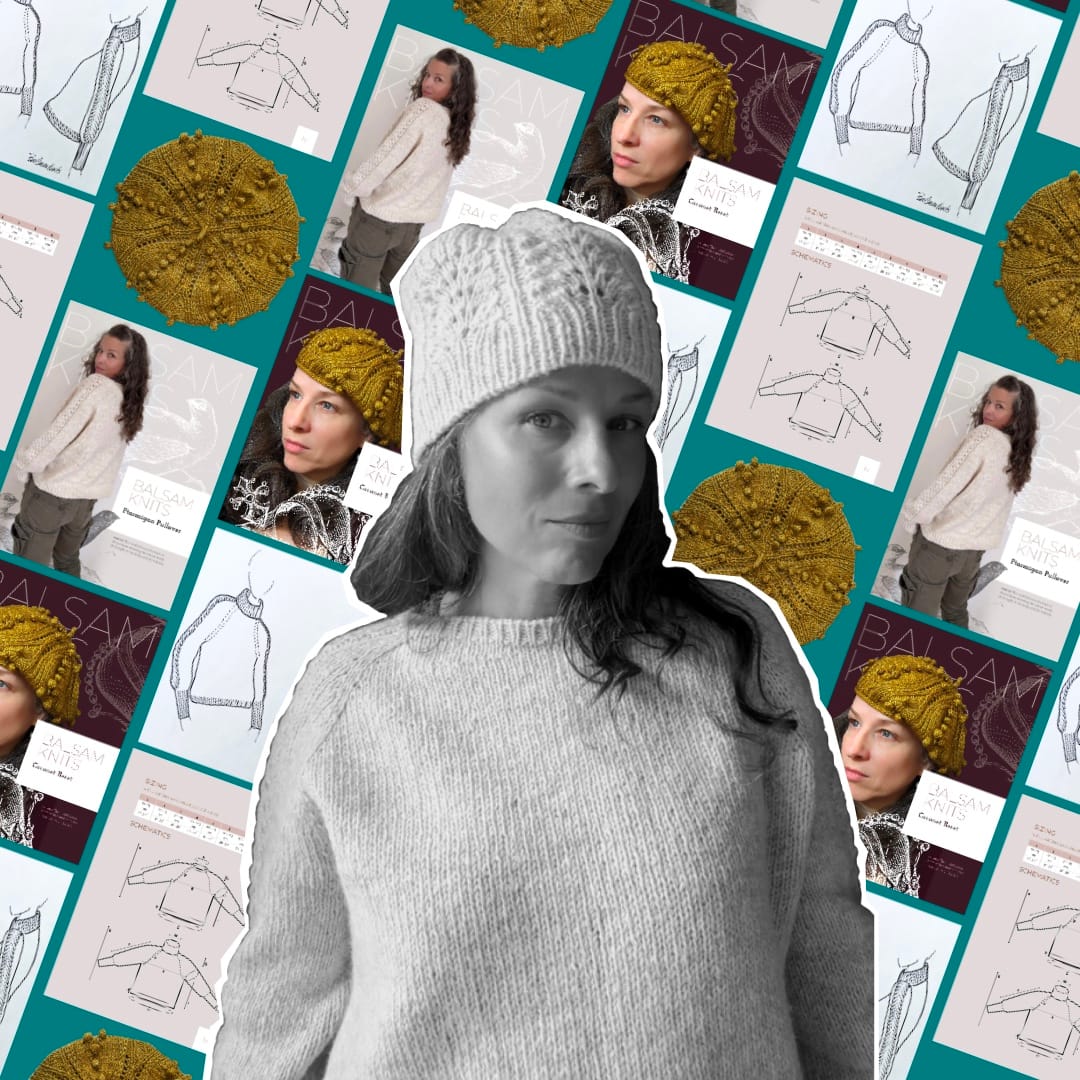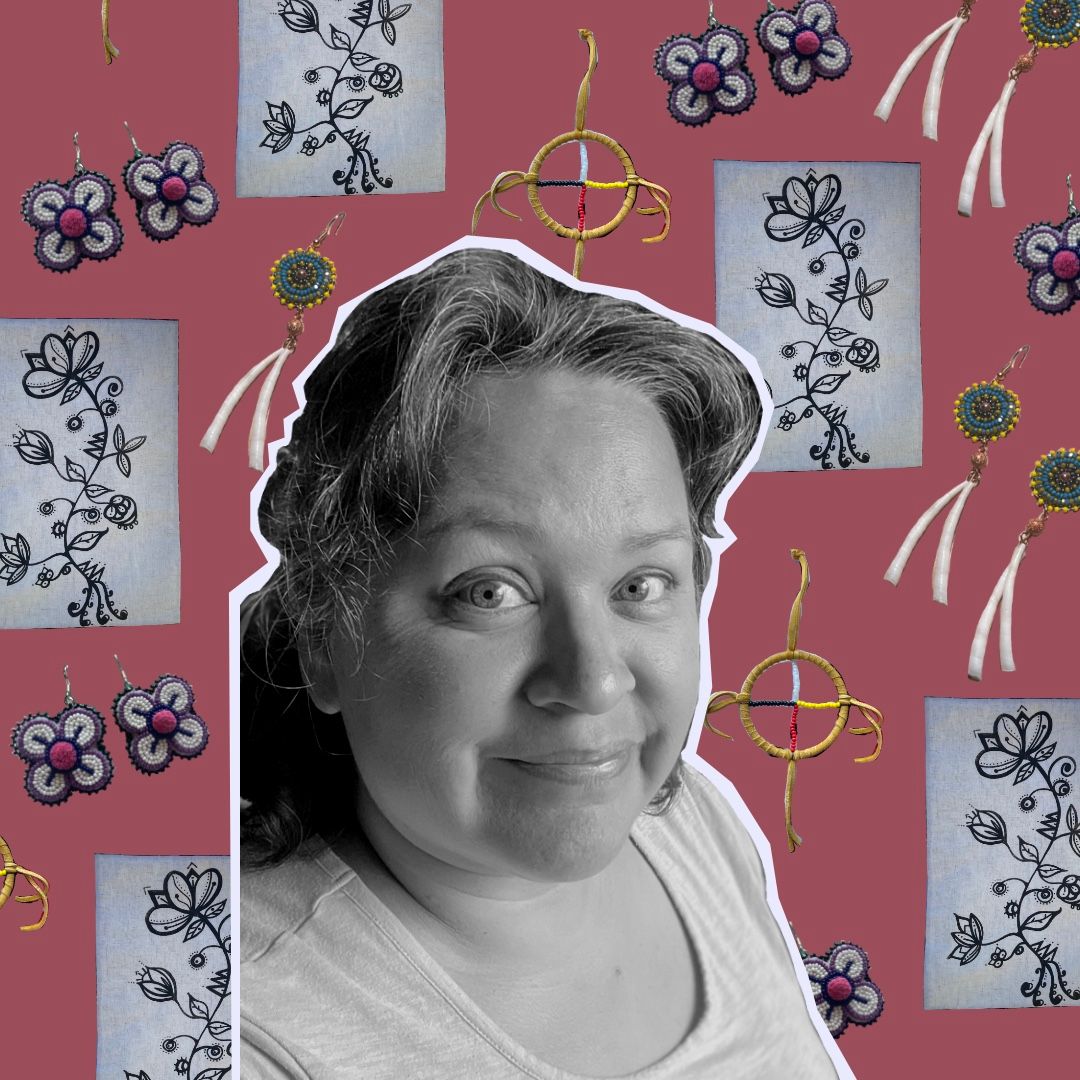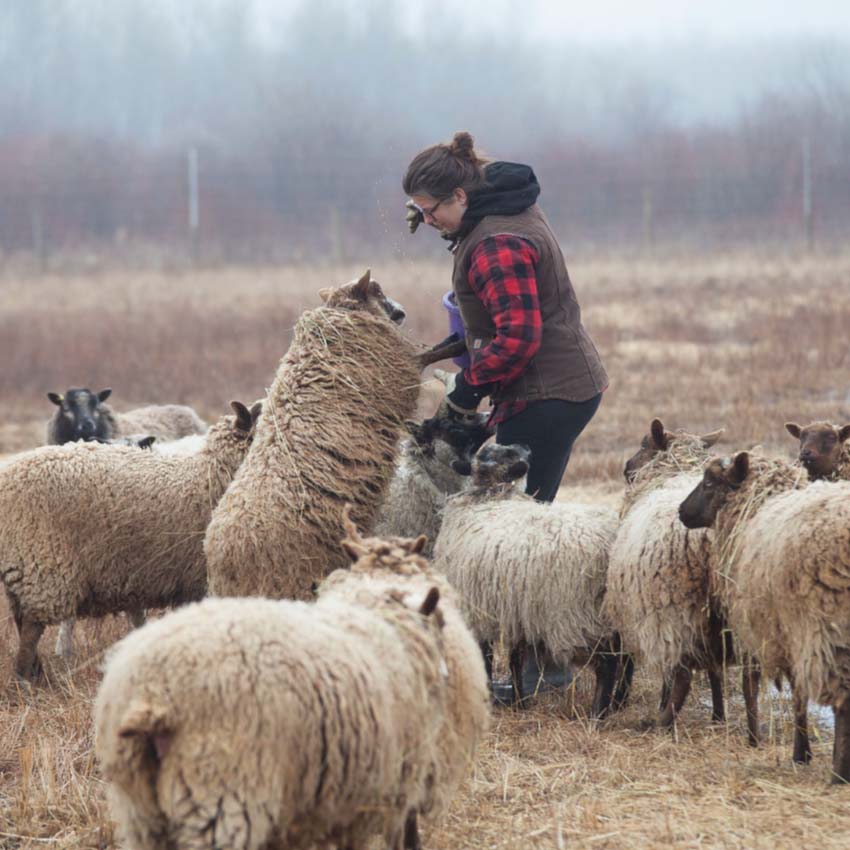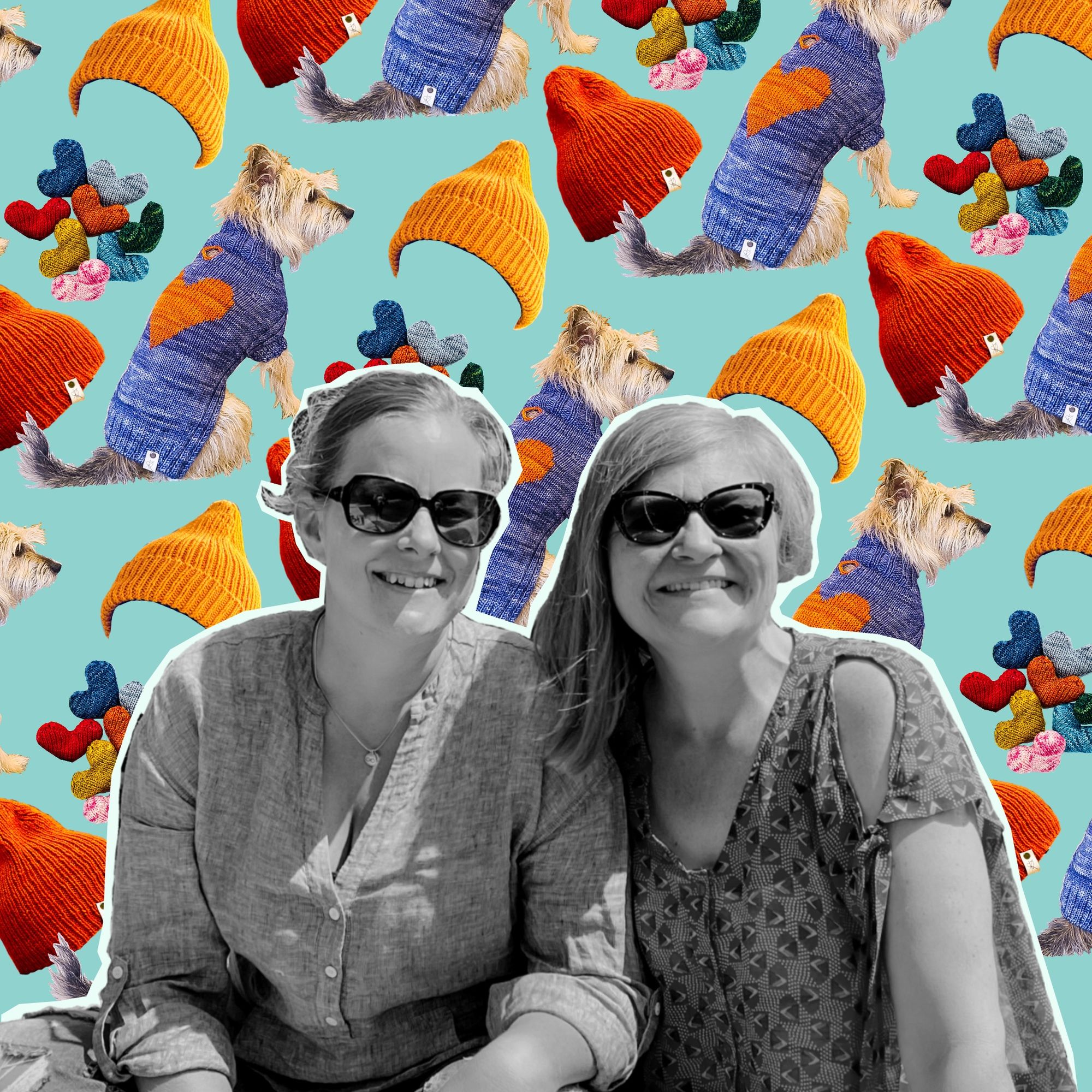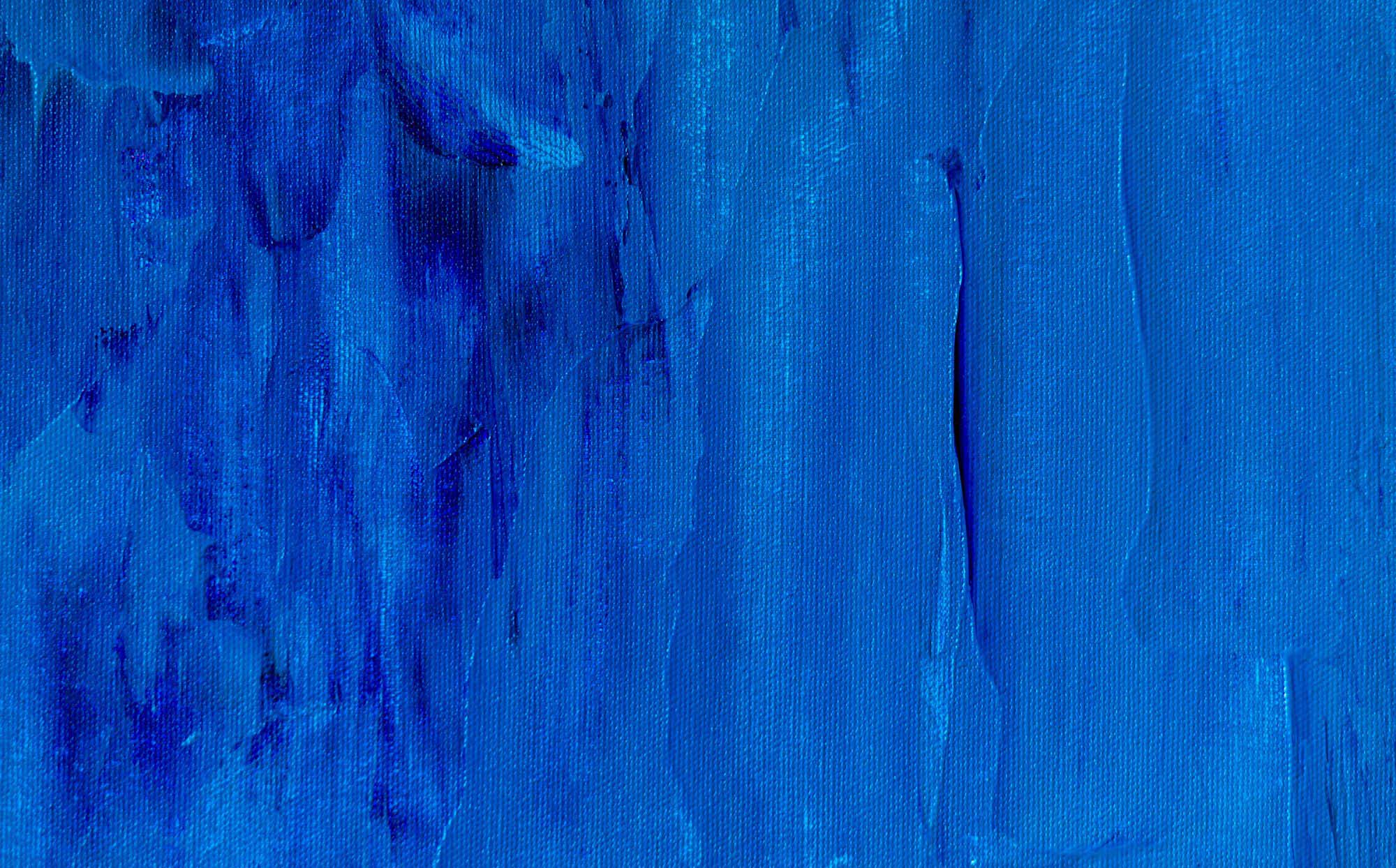It’s been more than a decade since Dawn Iehstoseranón:nha Setford first started the Indigenous Arts Collective of Canada (IACC) “to preserve and revitalize endangered Indigenous art forms and enrich lives through Indigenous arts and culture.” Since then, the organization — which is based on unsurrendered and unceded Algonquin territory now known as Ottawa — has supported Indigenous women in Canada and beyond as they develop new skills, build relationships and earn an income through selling their artwork.
We chatted with Dawn on the phone to learn more about the IACC and its mission, achievements and goals. Here’s what she told us.
Workshop: Why did you start the IACC?
Dawn Iehstoseranón:nha Setford: It comes from being a part of Indian child apprehension programs that were run by church and state. I'm quite sure you've heard of the residential school system by now. The parallel program to that was apprehending children at birth. I am one of those children. When I was born, I was put directly into foster care, and then adopted out to a non-Indigenous family in a little German Mennonite town called Vineland, Ont.
The removal and displacement of millions of Indigenous children was a huge contribution to destroying the culture. When I found out who I was at 18 years old, it became my mission to learn, to reconnect with my family and to reconnect with my community. That grew into realizing I wasn't the only one, into making sure that I met other people like me and doing my best to help us all collectively try to recapture what was taken from us.

That's my personal reason for doing the work I began at that time. But it has grown. I'm a one-woman show in my basement but we have a membership of about 400 artists now. And I've developed a lot of programming over the years.
It began with a directory of artists, so if schools wanted workshops, or someone wanted to buy something made by an Indigenous person, I had this database that they could search. That database is huge now.
Then I had this bright idea that I could handle running conferences for Indigenous women, so… that was brilliant. It’s a lot of work. [laughs] You can hear the tone in my voice, like why have I done this to myself? This has been a full-time volunteer position for me for quite a number of years. Workshopping has become a big part of my life.
Workshops are a huge tool for reintroducing and reclaiming our Indigenous art. A lot of our original art forms, anything from beadwork to clothing, are born out of needing tools or spiritual items, or for expressing our spirituality. This is a huge part of what goes missing when mothers are broken and children are broken. The family unit and the community fall apart, and that learning stops. That's what I was looking to repair.
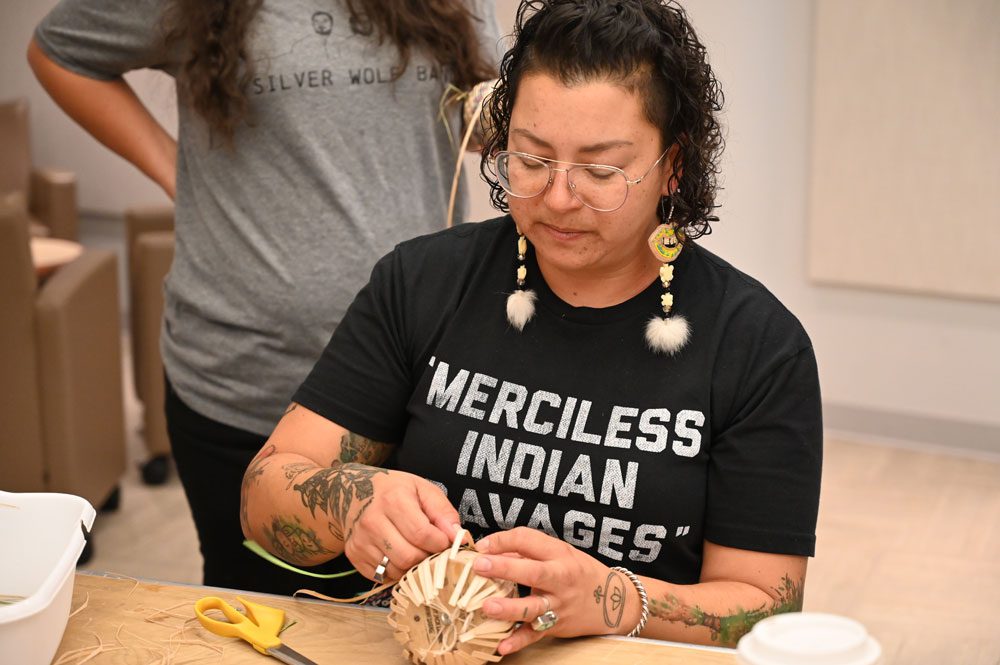
I ran a really large first conference on a really small budget, having about 25 different workshops with about 20 Indigenous women per workshop. We did everything from beadwork to drum making and fish scale art and beading. Moccasin making. Four hundred women got free workshops and were reconnected to art forms that they were never allowed to learn.
Workshopping is not just the learning process, but also the relationship building. When you get these women together, they all had bits and pieces of culture. And they start putting that together and creating relationships. It fills my heart to see these relationships continue on Facebook, all these girls creating groups and finding each other.
During COVID, I was worried about the women. Most of our artists are home-based and with families, so during COVID, their income basically stopped. When that in-person selling and trading and workshopping had to stop, everyone started disconnecting again, which was brutal. So I spent several months building a website called IndigenARTSY. It's much like the idea of Etsy, where our members have their own stores.
We also launched a Facebook page, Indigenous Arts Marketplace. We have about 30 artists on there at any time who are posting items for auction each week. The auctions close on Thursdays at 7 pm. It has guaranteed an income for all these people for the past two years. It's magnificent. I'm very proud of that.
And then we had our 2022 Indigenous Women's Arts Conference in October, which was spectacular. Thousands of Indigenous women came from all across the country and many up from the U.S., and we had some Mayan people come from Mexico. We ran workshops for three days. We did tours of the Museum of History archives, which is where most of our stolen property is housed in Canada. They have these massive hangars that are all locked up and there's shelves upon shelves of work from our communities, like moccasins and sacred items and clothing and baskets and bassinets and cradle boards. We ran tours to spread the word that our property is locked up in these vaults, and that we can access them, but we have to make appointments and be chaperoned, and we can't touch anything. There's obviously a lot of emotional dynamics involved with that. And we had a big marketplace. We took over the whole St. Laurent Shopping Centre in Ottawa. We had about a hundred Indigenous vendors there.
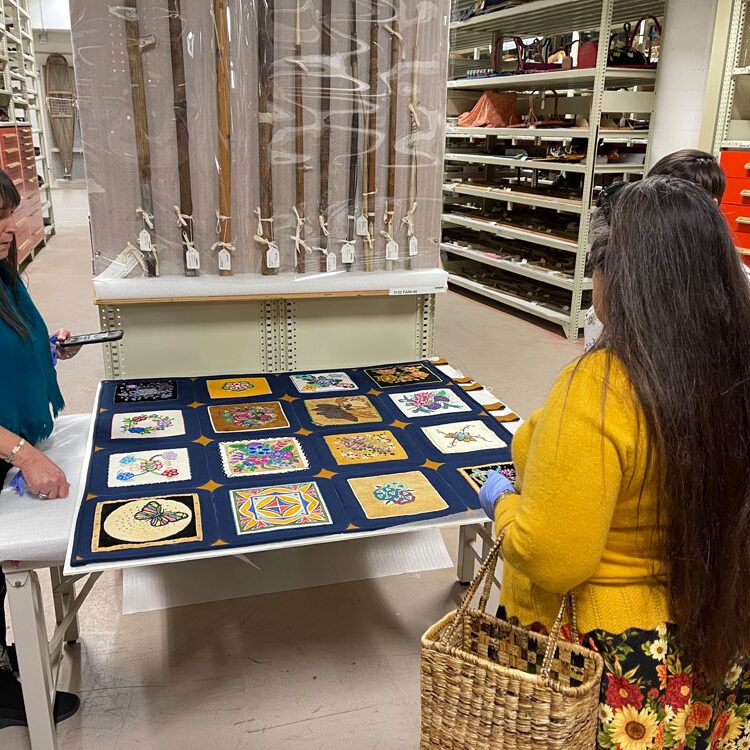
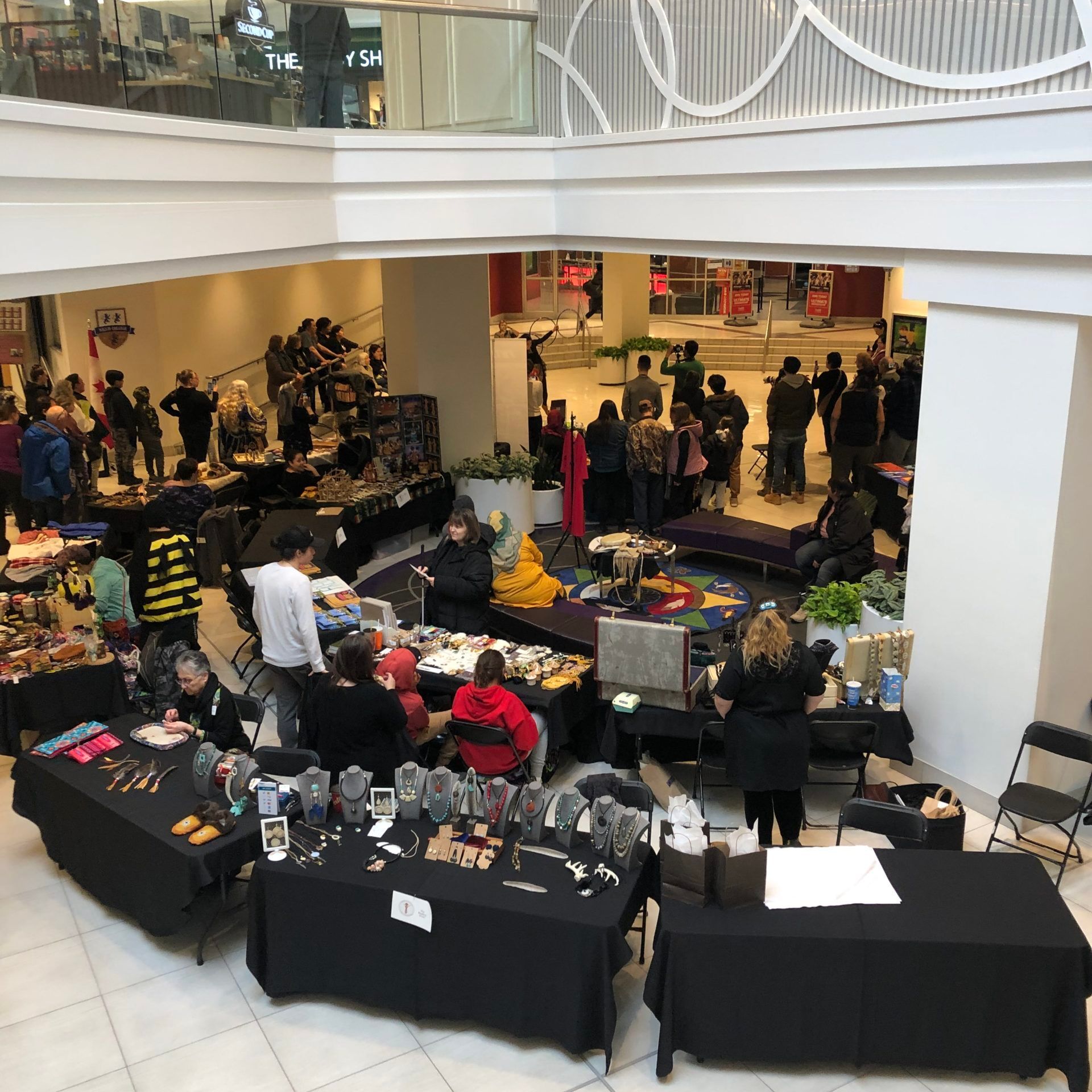
We have not received funding for our 2023 conference, which is really disappointing to me, and quite shocking. We're used to relying on the Canada Council for the Arts but our application was denied this year. If we can’t find funding, we may not be able to have a 2023 conference, which would break my heart. But at the same time, it is a huge amount of work. So I'm kind of torn with that right now.
W: In the time you've been running this organization, what are some moments that stand out to you that you're really proud of?
DIS: I would have to say the conferences — all of them. There's nothing more beautiful than seeing those relationships being built and seeing tears and seeing women hold each other, even when they've just met. That's the most magnificent part of everything.
Also, in 2021, for the first National Day of Truth and Reconciliation, we were the organization that secured the event on Parliament Hill for survivors of Indian residential schools. That was also a massive accomplishment, and a highlight to my work and my life. We had probably 8,000 people show up, and we were able to support the survivors with gifts and comfort and all of those beautiful things.
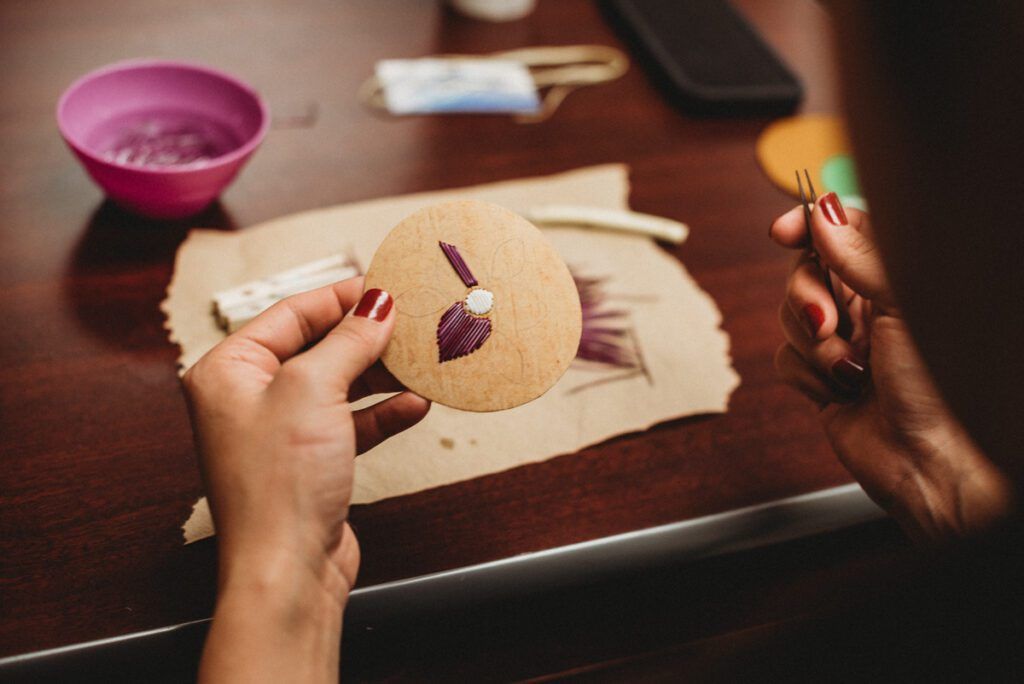
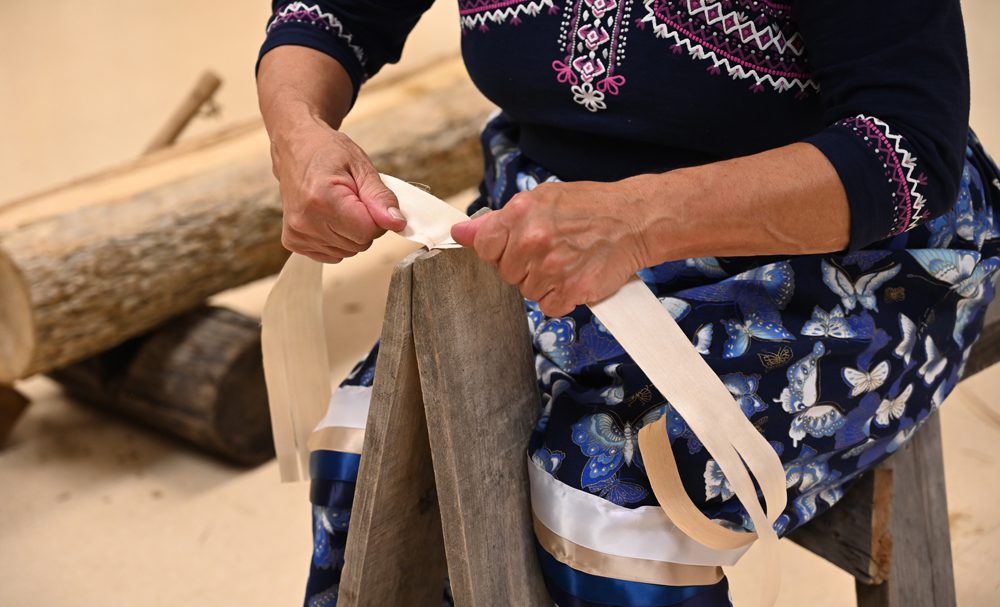
W: What are some of your goals and dreams for the future?
DIS: Hopefully we'll have a conference this year. We'll see what funding brings. We are now designated by Heritage Canada as a national arts service organization, which is a pretty hard-won accomplishment. I worked on that for about eight years before I was accepted. That automatically gives us charity status, and with that there's opportunity for corporate sponsorship.
Right now, we run on grant money. And the grants only come if I can apply for them — and I have a lot on my plate. I would love to see if there's any way that a corporation would consider sponsoring us for operational funding, so I can continue to pay the bills.
W: In case they aren’t already members, what are some reasons that Indigenous artisans might want to join your organization and get involved? And what is the process?
DIS: New artists that register and are approved for membership are welcome to use any of our services. That would include selling on the Facebook Marketplace, which sees about 30,000 people a week now. They can create a store and sell on IndigenARTSY as well. Member artists are also the first go-to for any events where we have vendors. And it's always free for our membership.
That's a really important point to make here — everything I do is free for Indigenous artists. It's all made to support them and not ask anything from them. So members would get first dibs on any vending opportunities and any workshop opportunities through schools or government organizations. There are often call-outs for people to come into office buildings and schools and do workshops, so I go straight to my membership on that.
There are also regular opportunities for really large sales. For example, we’ve taken orders from Estée Lauder Canada, who wanted to give dreamcatchers as part of a purchase. So I'll reach out to our artists to fulfill those large orders. I get a lot of opportunities that I put forward.
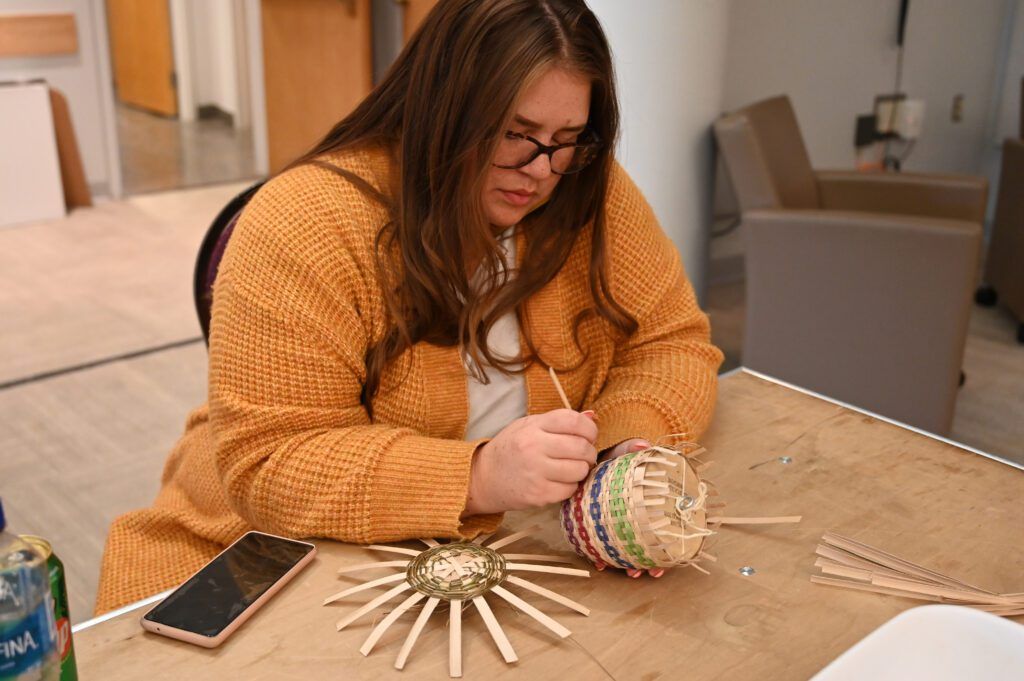
People can go to indigenousartscollective.org and find the membership application. That will go for approval through the board. Artists need to submit photos of their work and themselves, a bio and contact information. Once approved, we put up a membership page for them so they're in our database and searchable to the public.
W: For our readers who are not Indigenous, what are some ways that they can support your work or the work of Indigenous makers and artists in general?
DIS: They can join us on Facebook and share the page. That's what I'm begging — I can't share it any more than I already do. But if we can get more people to join us and do that sharing, that would be amazing. Also, if people in their workplaces are looking for workshops or products, I invite them to go to the website and search. Spreading the word about that database would be great too, so we can get some more exposure for the artists.
At the end of the day, what makes me happy is to see the ladies selling. The Facebook Marketplace is fun because if they put up four things a week for $100 apiece, that's $400 a week. That's pretty much paying for all the groceries and bills every month. When I look at that kind of contribution, I feel really proud. Because it's up to them how much they work. And if they want to pay the rent, I've given them a resource that will help them.
Photos by Brandy Bloxom and Marjorie Skidders, courtesy IACC.

